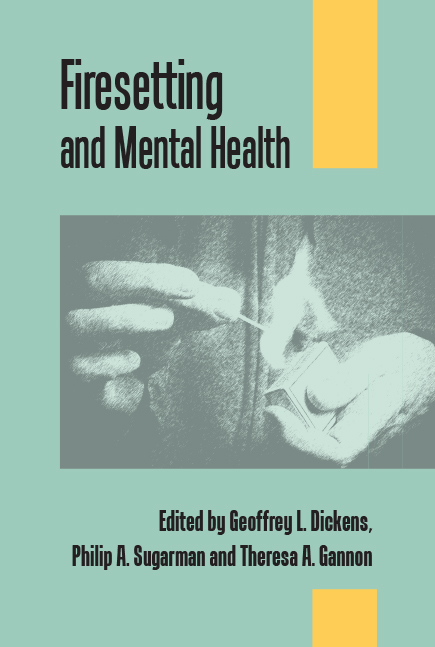Book contents
- Frontmatter
- Contents
- List of figures, tables and boxes
- List of contributors
- Preface
- Part I Theory and research
- 1 Adult firesetters: prevalence, characteristics and psychopathology
- 2 Theories on arson: the action systems model
- 3 Differentiating firesetters: lessons from the literature on motivation and dangerousness
- 4 The potential relevance of brain dysfunction in arson
- 5 The developmental aspects of firesetting
- 6 Intellectual disability and arson
- 7 Female arsonists and firesetters
- 8 Power and excitement in arson: the case of firefighter arson
- Part II Practice and law
- Index
2 - Theories on arson: the action systems model
from Part I - Theory and research
- Frontmatter
- Contents
- List of figures, tables and boxes
- List of contributors
- Preface
- Part I Theory and research
- 1 Adult firesetters: prevalence, characteristics and psychopathology
- 2 Theories on arson: the action systems model
- 3 Differentiating firesetters: lessons from the literature on motivation and dangerousness
- 4 The potential relevance of brain dysfunction in arson
- 5 The developmental aspects of firesetting
- 6 Intellectual disability and arson
- 7 Female arsonists and firesetters
- 8 Power and excitement in arson: the case of firefighter arson
- Part II Practice and law
- Index
Summary
This chapter develops an account of the utility of psychological models as an aid to understanding the crime of arson. A brief overview of some of the theories and typologies previously espoused is first presented. As its main focus the chapter then defines and provides an account of an ‘action systems’ model, which, in contrast to other arson typologies, produces empirically testable hypotheses. It goes on to describe how this model posits arson, and other crimes, as explicable along two axes relating to the arson target (object or person) and the arson objective (expressive or instrumental). The use of multidimensional scaling (MDS) analysis to map the characteristics of arson and arsonists onto these four modes is also described. The idea is developed of arsonists with psychiatric history as a distinct group, and the relationships between this distinct group of arsonists and the various arson modes are explored. The chapter lastly summarises how a typology based on arson mode and arsonist characteristics might affect clinical treatment.
Throughout the chapter the term ‘arson’ is used to denote adults who have set fires that in most cases would meet the legal criteria for arson. However, some studies are cited that include individuals who self-reported firesetting behaviour and were not necessarily convicted in court. Thus, these individuals are legally speaking not ‘arsonists’; however, for simplicity the term ‘arson’ is used consistently throughout.
Arson and psychopathology
Much of what is known about adult arsonists is derived from studies of mentally disordered offenders. Studies based on these populations have informed ideas about what risk factors can predict arson recidivism (Dickens et al, 2009) as well as the primary treatment goals that might prevent reoffending (Swaffer et al, 2001). Whereas the literature on juvenile arson draws largely on community samples (Kolko & Kazdin, 1990; Kolko, 2002), adult arsonists mainly come to the attention of clinicians and researchers through the criminal justice system. Therefore research has relied on groups of incarcerated offenders – often in psychiatric institutions – to inform theories about motivations, characteristics and treatment needs.
- Type
- Chapter
- Information
- Firesetting and Mental Health , pp. 28 - 47Publisher: Royal College of PsychiatristsFirst published in: 2017



